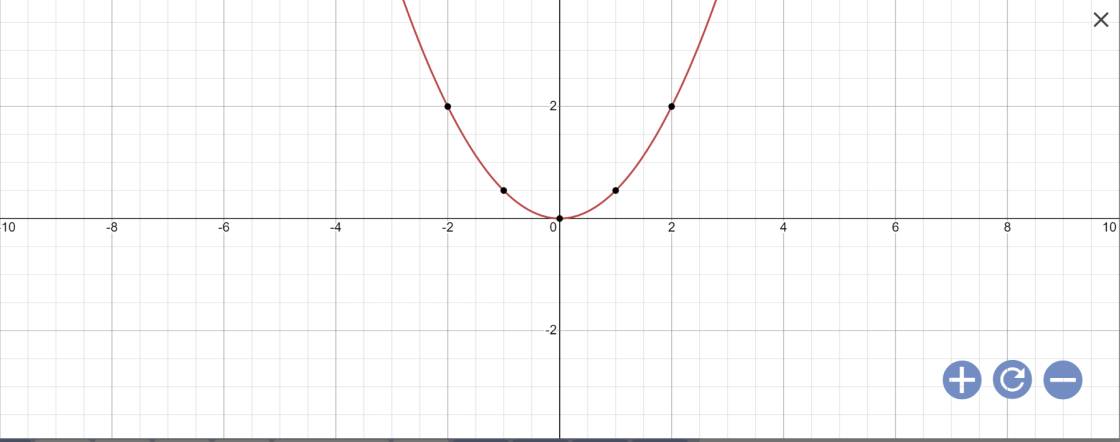Rút gọn biểu thức
B=\(\dfrac{x-1}{\sqrt{x}-1}-\dfrac{3\sqrt{x}+x}{\sqrt{x}}\)
với x>0, x khác 1
Giúp mình với ạ, cảm ơn mọi người nhìu ạ
Hãy nhập câu hỏi của bạn vào đây, nếu là tài khoản VIP, bạn sẽ được ưu tiên trả lời.

\(\text{Δ}=\left(-6\right)^2-4\cdot1\cdot\left(-m\right)=4m+36\)
Để phương trình có hai nghiệm phân biệt thì Δ>0
=>4m+36>0
=>m>-9
Theo Vi-et, ta có:
\(\left\{{}\begin{matrix}x_1+x_2=-\dfrac{b}{a}=6\\x_1x_2=\dfrac{c}{a}=-m\end{matrix}\right.\)
\(\left(x_1-x_2\right)^2=\left(x_1+x_2\right)^2-4x_1x_2=36+4m\)
=>\(x_1-x_2=\pm2\sqrt{m+9}\)
\(x_1^2-x_2^2=24\)
=>\(\left(x_1+x_2\right)\left(x_1-x_2\right)=24\)
=>\(\pm2\sqrt{m+9}=4\)
=>\(\pm\sqrt{m+9}=2\)
=>\(\left[{}\begin{matrix}\sqrt{m+9}=2\left(nhận\right)\\\sqrt{m+9}=-2\left(loại\right)\end{matrix}\right.\Leftrightarrow m+9=4\)
=>m=-5(nhận)

\(\left\{{}\begin{matrix}x^2+y^2+2x=4\\x+2y+xy=4\end{matrix}\right.\)
\(\Leftrightarrow\left\{{}\begin{matrix}x^2+y^2+2x=4\\2x+4y+2xy=8\end{matrix}\right.\)
\(\Rightarrow x^2+y^2+2x+2x+4y+2xy=12\)
\(\Leftrightarrow\left(x+y\right)^2+4\left(x+y\right)-12=0\)
\(\Leftrightarrow\left[{}\begin{matrix}x+y=2\\x+y=-6\end{matrix}\right.\)
\(\Leftrightarrow\left[{}\begin{matrix}y=2-x\\y=-6-x\end{matrix}\right.\)
TH1: \(y=2-x\). Thế vào pt thứ 2 của hệ, ta có:
\(x+2\left(2-x\right)+x\left(2-x\right)=4\)
\(\Leftrightarrow x+4-2x+2x-x^2-4=0\)
\(\Leftrightarrow x-x^2=0\)
\(\Leftrightarrow\left[{}\begin{matrix}x=0\Rightarrow y=2\\x=1\Rightarrow y=1\end{matrix}\right.\)
TH2: \(y=-x-6\). Thay vào pt thứ 2 của hệ, ta có:
\(x+2\left(-x-6\right)+x\left(-x-6\right)=4\)
\(\Leftrightarrow x-2x-12-x^2-6x-4=0\)
\(\Leftrightarrow-x^2-7x-16=0\) (vô nghiệm vì \(-x^2-7x-16< 0\) với mọi \(x\))
Vậy hệ phương trình đã cho có 2 cặp nghiệm \(\left(x;y\right)\) là \(\left(1;1\right)\) và \(\left(0;2\right)\)

Lời giải:
Áp dụng BĐT Bunhiacopxky:
$(\sqrt{2a+b}+\sqrt{2b+c}+\sqrt{2c+a})^2\leq [(2a+b)+(2b+c)+(2c+a)](1+1+1)=3(a+b+c).3=9(a+b+c)=81$
$\Rightarrow \sqrt{2a+b}+\sqrt{2b+c}+\sqrt{2c+a}\leq 9$
Vậy ta có đpcm
Dấu "=" xảy ra khi $a=b=c=3$

\(\dfrac{1}{2}\left(x+1\right)\left(3-x\right)+x=3\)
\(\Leftrightarrow\left(\dfrac{1}{2}x+\dfrac{1}{2}\right)\left(3-x\right)-\left(3-x\right)=0\)
\(\Leftrightarrow\left(3-x\right)\left(\dfrac{1}{2}x+\dfrac{1}{2}-1\right)=0\)
\(\Leftrightarrow\left(3-x\right)\left(\dfrac{1}{2}x-\dfrac{1}{2}\right)=0\)
\(\Leftrightarrow\dfrac{1}{2}\left(3-x\right)\left(x-1\right)=0\)
\(\Leftrightarrow\left[{}\begin{matrix}3-x=0\\x-1=0\end{matrix}\right.\Leftrightarrow\left[{}\begin{matrix}x=3\\x=1\end{matrix}\right.\)
Vậy phương trình đã cho có tập nghiệm là \(S=\left\{3;1\right\}\).
$Toru$
\(\dfrac{1}{2}\left(x+1\right)\left(3-x\right)+x=3\)
=>\(\dfrac{1}{2}\left(3x-x^2+3-x\right)+x=3\)
=>\(\dfrac{1}{2}\left(-x^2+2x+3\right)+x=3\)
=>\(-x^2+2x+3+2x=6\)
=>\(-x^2+4x-3=0\)
=>\(\left(x-1\right)\left(x-3\right)=0\)
=>\(\left[{}\begin{matrix}x-1=0\\x-3=0\end{matrix}\right.\Leftrightarrow\left[{}\begin{matrix}x=1\\x=3\end{matrix}\right.\)

x-y=4
=>y=x-4
Vậy: Nghiệm tổng quát là \(\left\{{}\begin{matrix}x\in R\\y=x-4\end{matrix}\right.\)
Biểu diễn nghiệm:


a: 
b: Thay x=0 và y=-2 vào (d1), ta được:
\(a\cdot0+b=-2\)
=>b=-2
=>(d1): y=ax-2
Thay x=1 và y=3 vào (d1), ta được:
\(a\cdot1-2=3\)
=>a-2=3
=>a=5
Vậy: (d1): y=5x-2
c: Phương trình hoành độ giao điểm là:
\(\dfrac{1}{2}x^2=2x+m\)
=>\(x^2=4x+2m\)
=>\(x^2-4x-2m=0\)
\(\Delta=\left(-4\right)^2-4\cdot1\cdot\left(-2m\right)=8m+16\)
Để (P) cắt (d2) tại hai điểm phân biệt thì 8m+16>0
=>8m>-16
=>m>-2
Theo Vi-et, ta có:
\(\left\{{}\begin{matrix}x_1+x_2=-\dfrac{b}{a}=4\\x_1x_2=\dfrac{c}{a}=-2m\end{matrix}\right.\)
\(x_1+x_2-2x_1x_2=2024\)
=>\(4-2\cdot\left(-2m\right)=2024\)
=>4m+4=2024
=>m+1=506
=>m=505(nhận)

\(x+\sqrt{x+2}=0\left(ĐK:x\ge-2\right)\)
\(\Leftrightarrow x+1+\left(\sqrt{x+2}-1\right)=0\\ \Leftrightarrow x+1+\dfrac{x+2-1}{\sqrt{x+2}+1}=0\\ \Leftrightarrow x+1+\dfrac{x+1}{\sqrt{x+2}+1}=0\\ \Leftrightarrow\left(x+1\right)\left(1+\dfrac{1}{\sqrt{x+2}+1}\right)=0\\ \Rightarrow\left[{}\begin{matrix}x+1=0\\1+\dfrac{1}{\sqrt{x+2}+1}=0\left(PTVN\right)\end{matrix}\right.\Leftrightarrow x=-1\left(TMDK\right)\)
Vậy pt có nghiệm duy nhất: x=-1
Mình giải thích thêm phần này nhé:
\(1+\dfrac{1}{\sqrt{x+2}+1}=0\left(PTVN\right)\)
Vì với mọi x thuộc ĐK:
\(\sqrt{x+2}\ge0\Rightarrow\sqrt{x+2}+1>0\\ \Rightarrow\dfrac{1}{\sqrt{x+2}+1}>0\\ \Rightarrow VT=1+\dfrac{1}{\sqrt{x+2}+1}>0=VP\)
Do VT > VP nên không thể xảy ra dấu =
Dẫn đến ptvn bạn nhé

\(B=\dfrac{x-1}{\sqrt{x}-1}-\dfrac{x+3\sqrt{x}}{\sqrt{x}}\)
\(=\dfrac{\left(\sqrt{x}-1\right)\left(\sqrt{x}+1\right)}{\sqrt{x}-1}-\dfrac{\sqrt{x}\left(\sqrt{x}+3\right)}{\sqrt{x}}\)
\(=\sqrt{x}+1-\sqrt{x}-3=-2\)
\(B=\dfrac{x-1}{\sqrt{x}-1}-\dfrac{3\sqrt{x}+x}{\sqrt{x}}\left(x>0,x\ne1\right)\\ =\dfrac{\left(\sqrt{x}-1\right)\left(\sqrt{x}+1\right)}{\sqrt{x}-1}-\dfrac{\sqrt{x}\left(3+\sqrt{x}\right)}{\sqrt{x}}\\ =\sqrt{x}+1-\left(\sqrt{x}+3\right)\\ =\sqrt{x}+1-\sqrt{x}-3\\ =-2\)